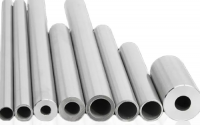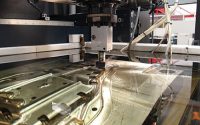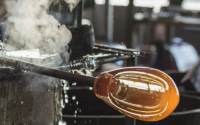TZM Alloy vs Pure Molybdenum
The two main types of molybdenum used in industry are pure molybdenum and TZM alloy (Titanium-Zirconium-Molybdenum). While both offer superior properties, they are suited to different applications based on their specific strengths.
Below is a detailed comparison of TZM alloy and pure molybdenum, including key data to highlight the differences between these materials.
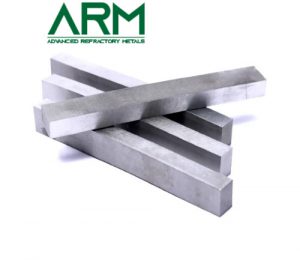
1. Composition and Structure
Pure molybdenum (99.95% Mo) is highly valued for its inherent strength and the high melting point of 3,132°C (5,669°F), with a density of 10.2 g/cm³. It also has a yield strength of 220 MPa at room temperature.
On the other hand, TZM alloy consists of 99.42% molybdenum, with the addition of 0.5% titanium and 0.08% zirconium. These additions enhance its strength, particularly in high-temperature environments. TZM has a higher melting point of 3,260°C (5,900°F) and a significantly increased yield strength of 350 MPa. Moreover, TZM’s tensile strength is also notably higher at 700 MPa.
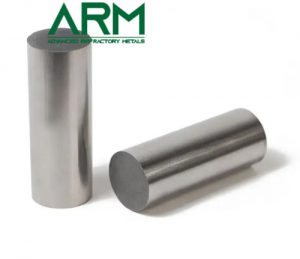
2. Mechanical Properties
Pure molybdenum, while strong at high temperatures, is somewhat softer compared to TZM.
TZM alloy benefits from its additional alloying elements, offering enhanced creep resistance—especially crucial in high-stress, high-temperature environments. TZM’s ability to maintain structural integrity under temperatures exceeding 1,600°C far surpasses that of pure molybdenum. Additionally, TZM has a hardness of 350 HV, significantly greater than pure molybdenum’s 200 HV, making TZM more resistant to wear and deformation under stress.
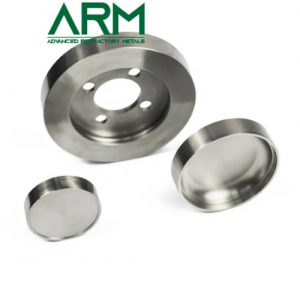
3. Thermal Properties
Both materials excel in high-temperature applications, but TZM outperforms pure molybdenum in certain aspects.
While thermal conductivity for pure molybdenum is slightly higher (138 W/m·K), TZM’s thermal conductivity of 130 W/m·K is still relatively high for high-temperature alloys. Both materials exhibit excellent specific heat capacity—pure molybdenum at 0.251 J/g·°C and TZM at 0.257 J/g·°C. The higher melting point of TZM makes it even more suitable for extreme temperature environments.
4. Oxidation Resistance
In terms of oxidation resistance, pure molybdenum begins to oxidize in air at temperatures above 500°C (932°F). This oxidation rate increases significantly with temperature, which can eventually lead to degradation of the material.
In contrast, TZM alloy offers superior oxidation resistance, remaining stable up to 1,500°C (2,732°F) in air. This enhanced resistance is due to the titanium and zirconium content, which forms a more durable oxide layer, significantly extending the lifespan of TZM components in extreme environments.
5. Applications
Pure molybdenum is commonly used in aerospace (e.g., rocket nozzles, turbine blades, heat shields) where its high-temperature capabilities are essential. It is also widely utilized in electronics (vacuum tubes, filaments, and electrical contacts) and in the steel industry as an alloying element for high-strength steel.
In comparison, TZM alloy is used in more demanding applications. It is ideal for aerospace and defense, where high creep resistance and oxidation resistance are critical for components like turbine blades, heat exchangers, and rocket nozzles. TZM is also employed in high-temperature manufacturing environments, such as vacuum furnaces and casting molds, as well as in electronics for applications like electron gun parts and x-ray tube components.
6. Cost and Availability
Pure molybdenum is typically less expensive than TZM alloy, primarily due to its simpler composition and less intensive processing. Its wide availability ensures that it remains a cost-effective option for many industries.
TZM alloy, however, is more expensive due to the inclusion of titanium and zirconium, as well as additional processing steps. While TZM is produced in smaller quantities, its specialized properties make it an indispensable material for applications in aerospace, high-temperature manufacturing, and electronics.
TZM Alloy vs Pure Molybdenum
| Property | Pure Molybdenum | TZM Alloy (Titanium-Zirconium-Molybdenum) |
| Composition | 99.95% Molybdenum, trace impurities | 99.42% Molybdenum, 0.5% Titanium, 0.08% Zirconium |
| Melting Point | 3,132°C (5,669°F) | 3,260°C (5,900°F) |
| Density | 10.2 g/cm³ | 10.2 g/cm³ |
| Yield Strength | 220 MPa (at 20°C) | 350 MPa (at 20°C) |
| Tensile Strength | 500 MPa (at 20°C) | 700 MPa (at 20°C) |
| Hardness | 200 HV | 350 HV |
| Thermal Conductivity | 138 W/m·K | 130 W/m·K |
| Oxidation Resistance | Oxidizes above 500°C (932°F) | Oxidation-resistant up to 1,500°C (2,732°F) |
| Applications | Aerospace, electronics, steel alloys | Aerospace, high-temperature manufacturing, electronics |
| Cost | Lower | Higher due to alloying elements |
For more comparison articles, please check Advanced Refractory Metals (ARM).
Conclusion
Both pure molybdenum and TZM alloy offer exceptional properties for high-temperature and high-strength applications. Pure molybdenum excels in cost-effectiveness and general high-temperature applications, while TZM alloy provides superior creep resistance, oxidation resistance, and strength at extreme temperatures.
The choice between the two depends on the specific requirements of the application, whether cost efficiency, enhanced mechanical properties, or resistance to extreme environmental conditions is the primary concern.

